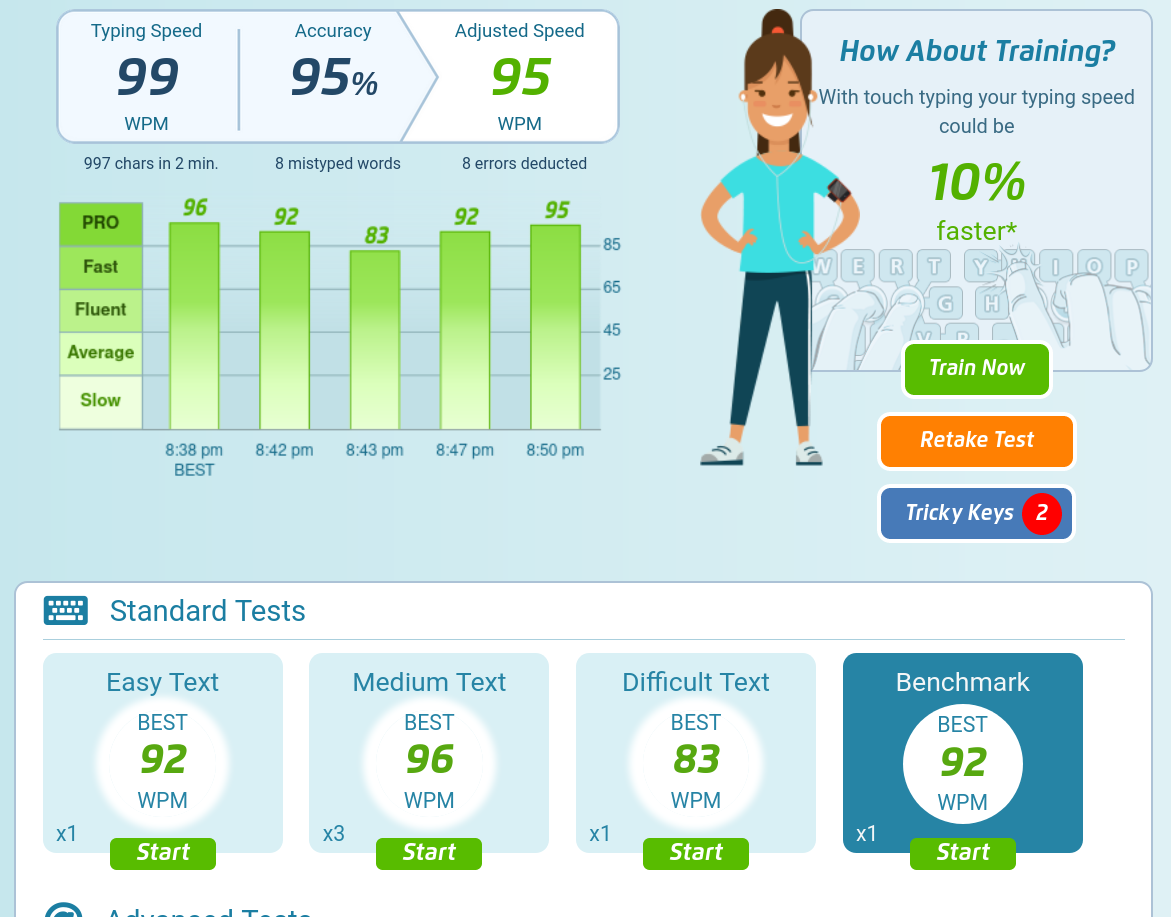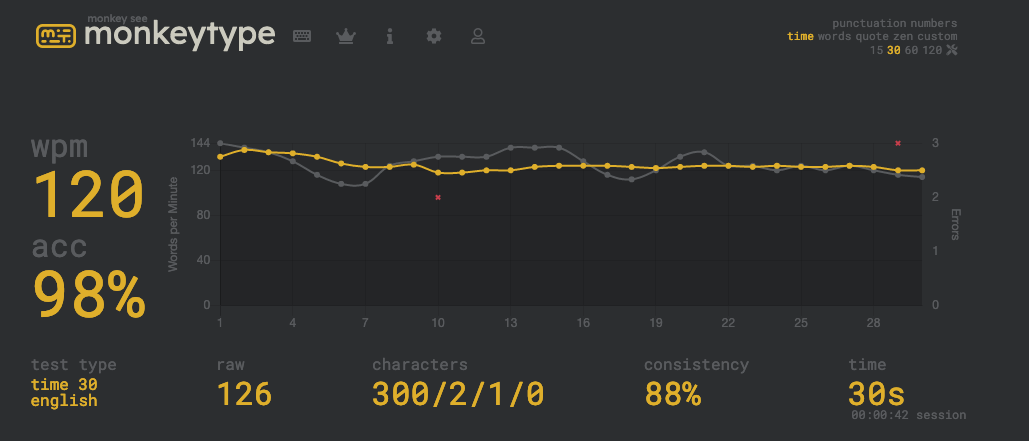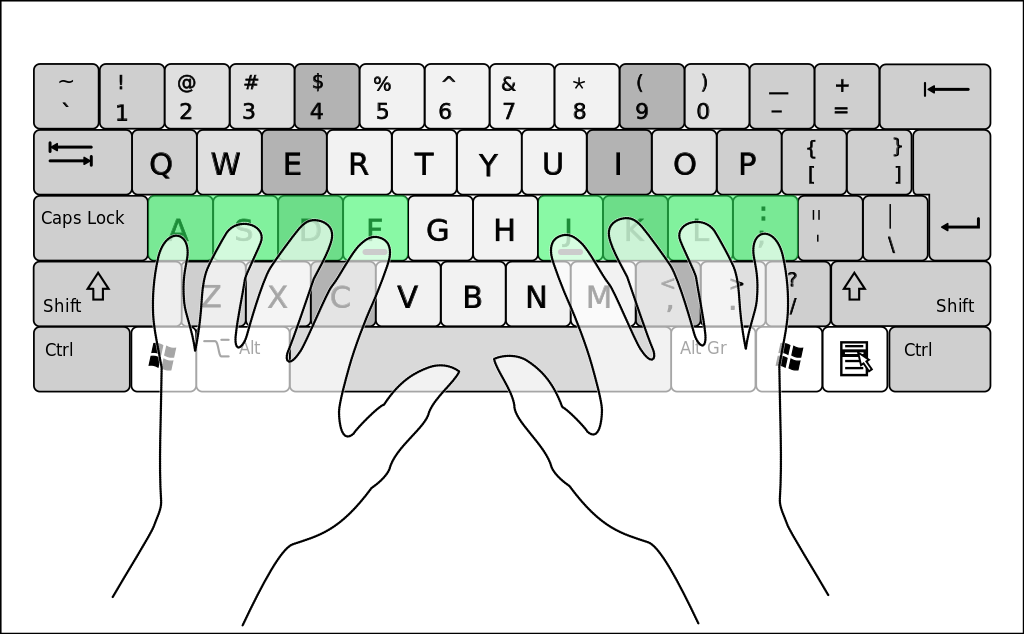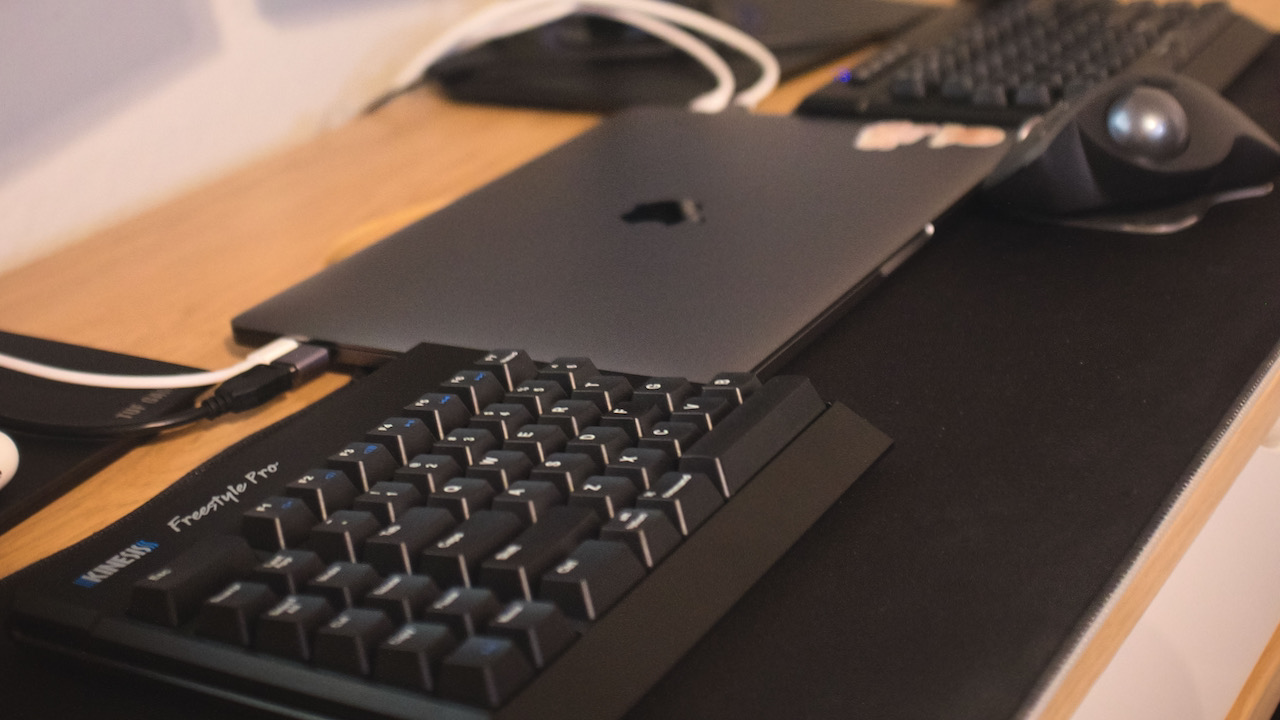Using a typing test that includes capitalizations, numbers, and punctuations, I can do around 90 words per minute (WPM).

With simpler ones without capitalizations, numbers, and punctuations, I can go up to 120 WPM.

Not that fast, but I think it's a decent speed for a programmer like me. The average typing speed is said to be around 35~40 WPM.
Touch typing
I was able to achieve such speeds through touch typing. It is a typing style that doesn't use sight to find the keys but rather muscle memory.
The fingers should always be in the home row keys when idle. The small bumps on certain keys of the home row help typists return their fingers to the home row for touch typing. Each finger is assigned a set of keys to press.

There are already many articles regarding this topic. The principle is to always use the correct finger when hitting the letter key.
How I learned it
In my early years in grade school (early 2000s), my dad encouraged me to learn to "type properly," which he refers to as the touch typing method. However, we didn't have a computer at home, and the only time I can use a computer is at school.
I familiarized the keys through a keyboard drawn on an illustration board. It wasn't enough - to be good at something physically done, you need to apply and practice it.
Eventually, my dad bought me a video game keyboard console for typing practice, which has typing mini-games built-in. When the game difficulty rises, the player must hit the right keys faster and accurately. It is not like pressing a button or two on a PSOne controller; you need to find and press the required letters on a slab with more than 50 buttons.
The typing video games allowed me to practice and apply touch typing because I wanted to achieve high scores. It helped me develop the habits for touch typing at an early age.
Ergonomic Keyboard
There is an increased risk of developing a repetitive strain injury (RSI) when typing for long periods of time. I usually feel discomfort on the wrists when typing on laptop keyboards.
To reduce RSI, I started exploring and using ergonomic peripherals. These are specially designed hardware, thus expensive than the regular ones, not to mention hard to procure.
My first ergonomic hardware and trackball is a Logitech MX Ergo, which I'm using since 2018. I really love this device.
On December 2021, I got my first ergonomic keyboard — a Kinesis Freestyle Pro with Cherry MX brown switches — for around $170 on Amazon. I used a Kingston HyperX with Cherry red switches, but I wanted a more tactile feedback. Blue switches are no-go because it would annoy coworkers if I bring it to my workplace.
It has a Mac, Windows, and Dvorak layout switch, so I don't need to configure the layout via the OS settings. It's an important function because I work on multiple OSes.
Still haven't got the chance to use the shortcut keys on the left side or try setting macros.

It's not without learning curve. I've been using it for a few weeks as of writing and I'm still in a period of adjustment because of its layout.